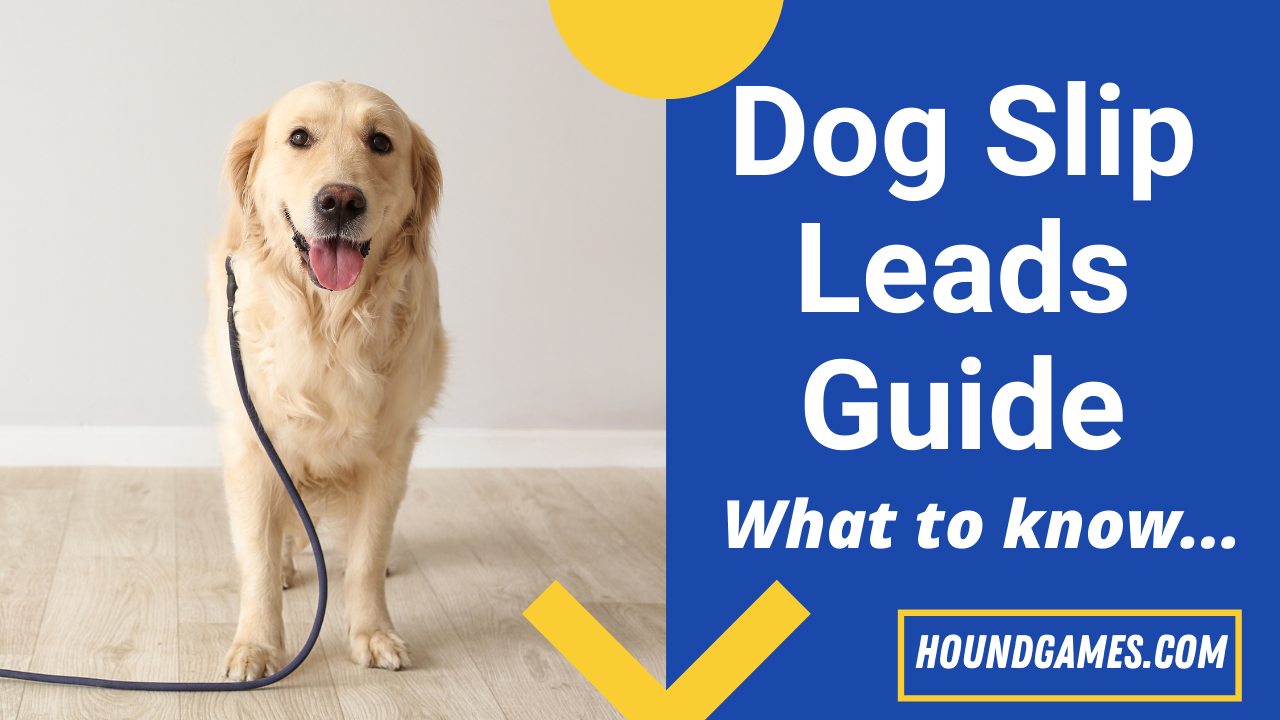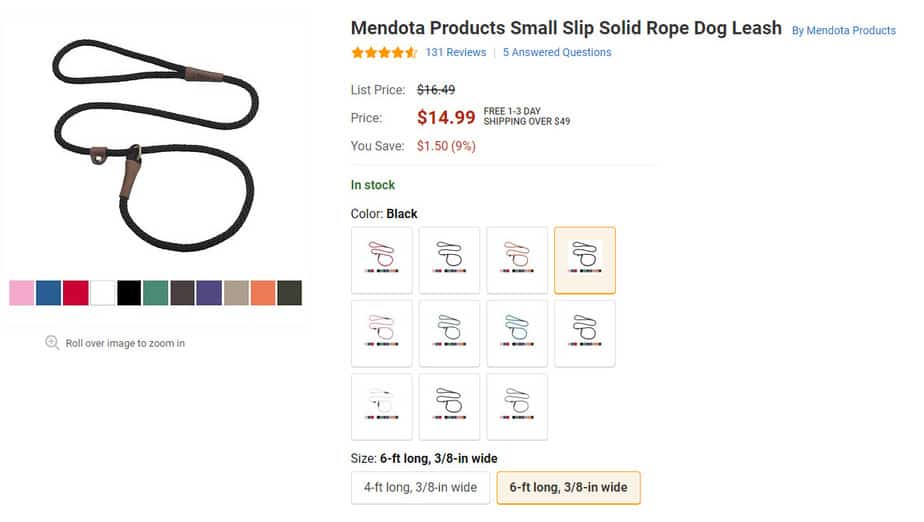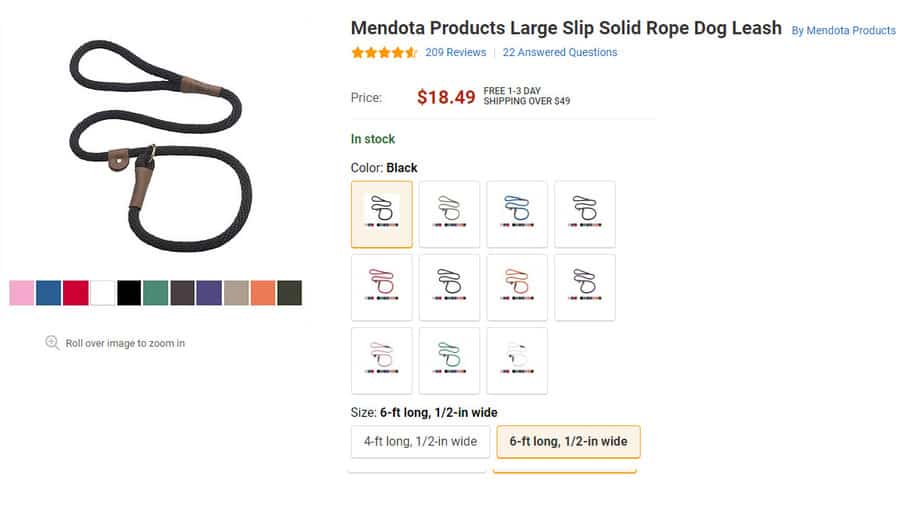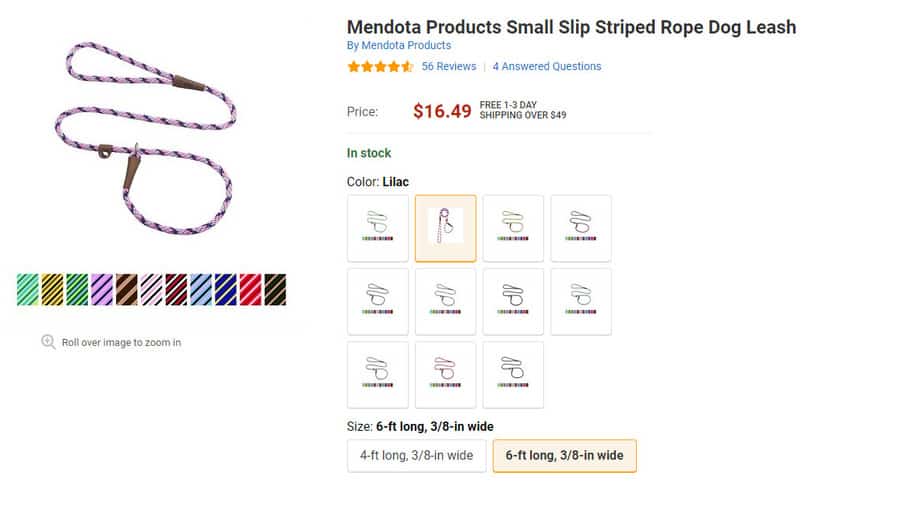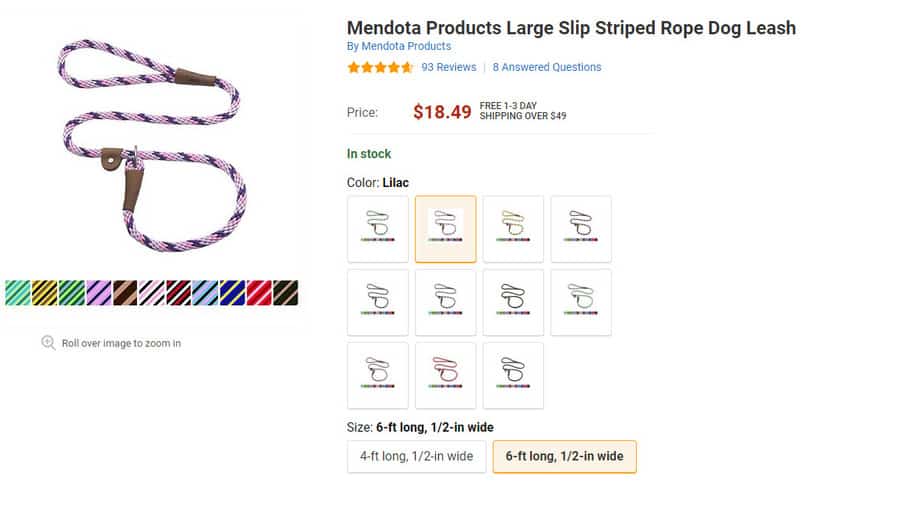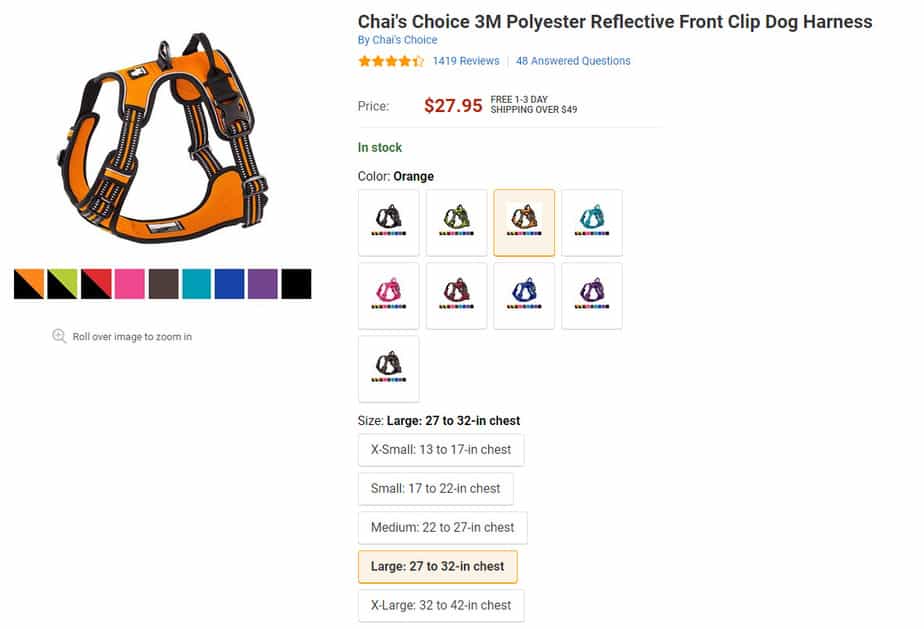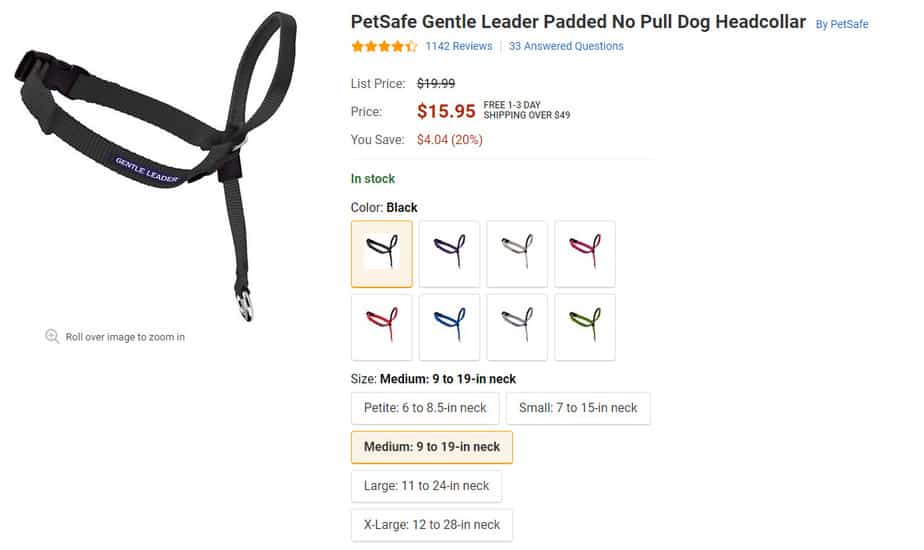Slip leads are a type of leash and collar all-in-one. They can be convenient tools, but they can also be dangerous if used incorrectly.
In this article, we will cover the mechanics of slip leads, as well as how you can use them safely if you choose to use one with your dog.
What is a Slip Lead?
A slip lead is a leash that includes a loop at the end of it that is used as a collar for the dog. With a slip lead, there are no clips, since the leash loops around the dog’s neck itself. Rather than a collar that always stays the same size, slip leads can become infinitely smaller if the leash is tight.
Slip leads are often used for convenience, especially at vet clinics, dog daycares, and animal shelters.
Without a slip lead, you would need to carry a leash appropriate for the dog, ensure dogs always had a collar, and find the D-ring to hook the leash to the dog when you needed it.
Instead, a slip lead is a safety measure that allows you to quickly catch and secure a dog that is loose or in a fight, especially in a setting with multiple dogs.
It also ensures that a dog doesn’t slip out if their collar or harness is too loose.
Slip leads are also used by dog owners, especially if you are just running your dog outside to the bathroom quickly.
They can also be useful in the case of competitions where your dog is off leash, such as dog agility competitions. In most cases, the dogs need to enter and exit the ring with a leash on them, but they can’t wear a leash while running the course.
A slip lead is fast and easy to ensure your dog is on a leash without unbuckling and rebuckling a collar or harness.
Is a Slip Lead a choke collar?
While a slip lead is an entire leash, and not a collar attached to a leash, it can function much the same as a choke collar. Slip leads will tighten indefinitely if the leash is pulled, just like a choke collar.
In the case of a slip lead, you just have the leash and choke collar connected continuously, rather than clipping a leash to the choke collar.
Both slip leads and choke collars have the ability to harm a dog’s neck and airways.
In most cases, a choke collar is made of chain, while a slip lead is made of cotton or nylon. However, you can find cases of choke collars being made of fabric as well.
While a slip lead has its place and can be useful in certain situations, for longer walks we recommend a martingale collar. We have a detailed post with everything you will ever need to know about martingale collars here.
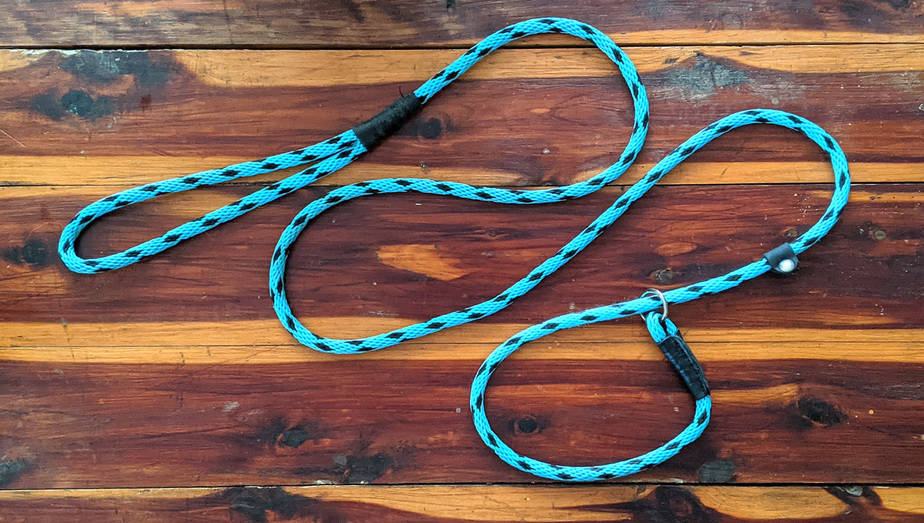
Is a Slip Lead cruel?
A slip lead is not inherently cruel. There are a variety of cases, such as veterinary clinics, where a slip lead is the safest option in many cases. However, a slip lead can certainly be turned into a cruel tool if used improperly.
A slip lead should not be used to correct a puppy. If you choose to use a slip lead with your dog for convenience, it’s important that you prevent your dog from pulling and tightening the slip lead.
There are easier (and safer) ways to train your dog not to pull on the leash than by using a slip lead – or a choke collar, for that matter.
Instead, you should only use a slip lead when your dog is trained not to pull on the leash, or as a way to safely move a dog without a collar, such as a dog in an animal shelter.
Using a slip lead to restrict a dog’s airway, tighten their neck for a painful or uncomfortable correction, or any other instance where the slip lead causes pain or discomfort should be avoided.
It’s simply not necessary, and risks harming your dog, both psychologically and physically.
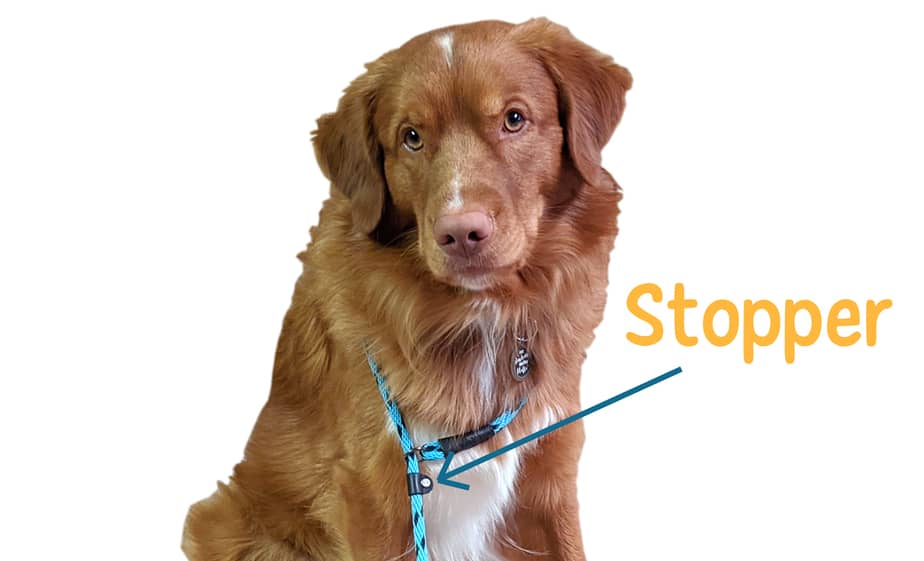
Should I use a Slip Lead on my puppy?
Yes, slip leads are a good tool to use for puppies when potty training. This is because you can quickly throw it over your puppy’s head to go outside. This helps with potty training as running your dog outside when they are about to have (or have just had) an accident, helps them learn that they should go outside instead.
If you don’t have a fenced-in yard, your puppy will need to go out on a leash to be safe.
You can also, of course, just leave a regular leash attached to your puppy when they are inside so that they are already leashed and ready to go whenever nature calls.
I have personally found slip leads to be a useful and convenient way of ensuring my puppy is safe and on a leash when we need to run outside while potty training – just in case.
However, I take great strides to ensure my puppies do not pull on the leash and hurt themselves.
Training how to walk nicely on a leash starts the day puppies in my home have a leash on them. When we are practicing loose leash walking, we use a regular collar or harness with a leash clipped to them.
I also always have treats in my pocket and practice having my puppies follow me, so that I can get them back inside after a potty break without them pulling on the leash.
Plus, with my puppies, I’m capable of picking them up if they do try to pull on the leash, so they don’t practice pulling or harm themselves.
If you want to walk your dog off-leash, be sure to read our post: Will My Dog Run Away Off-Leash?
Will a Slip Lead teach my puppy not to pull?
No, slip leads will not help to teach your puppy not to pull on the leash. There are much better options for your puppy, such as a properly fitted collar or harness with a leash attached, as well as positive treat training.
FYI My personal favorite slip lead brand is Mendota – they’re even made in my home state of MN and are super soft and durable.
Here are the Mendota Slip Lead options, which are easily available on Chewy:
When should I use a Slip Lead?
You should only use a slip lead when your dog is trained to not pull on the leash. If you think your dog or puppy may pull on the leash, you should avoid slip leads, as they can tighten indefinitely and cause harm.
After that, there’s no time where you absolutely need to use a slip lead. Slip leads are used out of convenience, and it’s not necessary to own one.
However, if there are times that you may find it convenient to have your dog on a slip lead – such as when you are running them out for a quick potty break, or moving them to an agility ring where they will need their leash taken off quickly, there are ways to make it safe.
Ensuring that your dog won’t pull on the slip lead and harm themselves is the number one priority when using a slip lead.
If you can ensure that your dog won’t pull, then using a slip lead is a safe and convenient way to leash your dog.
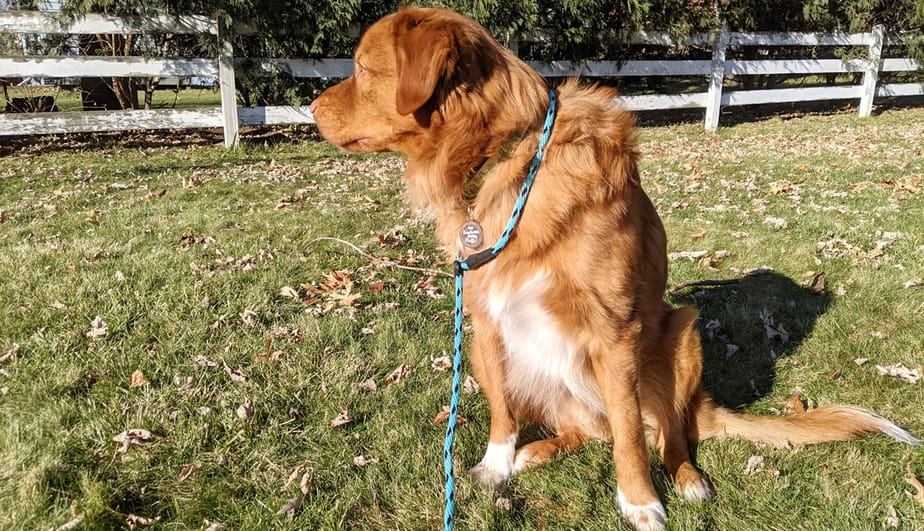
How to stop dog pulling on slip lead
Before advancing to a convenient slip lead, be sure to teach your dog to not pull on a safer lead. You can do this using the following method:
-
Teach your dog using a leash fixed to a properly fitted harness or collar. Alter directions 180 degrees if your dog is pulling on their leash.
-
Have some treats in your hand when walking your dog, and reward them when they come near you.
Slip lead vs harness
For a dog that pulls, a harness is the best option without a doubt. Slip leads put too much pressure on the neck in an indefinitely tightening circle, and can cause trauma to the soft tissue. Instead, a harness can spread that pressure over a dog’s chest and make it safer for them when pulling.
If you worry about your dog escaping, a harness is also often a safer option. While a slip lead may tighten and prevent your dog from slipping out of their collar, it’s also easy enough for a dog to slip out of the slip lead when it’s loose for a moment.
This is especially true for dogs that have heads that aren’t much bigger than their necks.
Here are two quality harness choices we recommend for your dog from Chewy:
It’s best for dogs that escape because it not only has the traditional straps in front of the chest and under the ribcage, but an additional strap that fits behind their ribcage.
By fitting the third strap behind their ribcage smaller than the rest of the harness, it becomes too difficult for most dogs to slip out of the harness.
I still often have a slip lead in my car, just in case – you never know when you might need to catch a stray dog or when your own dog’s equipment may break – but I fit harnesses for each of my dogs when we go hiking instead.
Slip lead dangers
Slip leads can become dangerous quickly if your dog is pulling on the leash. Not only does the collar part of the leash tighten indefinitely, potentially choking your dog, but it can easily damage the soft tissue in the neck just from the pulling itself.
The tightening of a slip lead (or any collar around a dog’s neck) can cause:
- An increase in the pressure in your dog’s eyes
- Cervical injuries to the spine in the dog’s neck
- Trauma to the thyroid gland, leading to a variety of thyroid problems
- Impingement in the nerves that lead to your dog’s front legs, leading to lameness and pain
- Injury to the salivary glands
- Collapsing trachea
- Behavior problems, as dogs in pain are more likely to be aggressive or shy
For these reasons and more, it’s critical that you protect your dog by only using a slip lead when they are already trained not to pull on the leash.
A harness is the safest option for dogs that pull on the leash until they are trained to do otherwise.
Martingale collar v slip lead
As we discussed when talking about harnesses, slip leads are often thought to be a great way to prevent your dog from escaping their collar. However, the danger of the slip lead is that it can tighten indefinitely.
Instead, if you are looking for a collar that helps prevent escapes, consider a martingale. Here is our post on the martingale collar.
Martingale collars don’t tighten indefinitely – instead, they should be fitted so they tighten just enough to prevent the dog’s head from slipping out of the collar when they pull.
Another benefit of martingales is that you can find them as a wide collar, that helps spread any pressure from pulling over a larger surface area on your dog’s neck.
Martingale collars can also hold your dog’s ID tags, which is another benefit to the collar itself instead of a slip lead.

